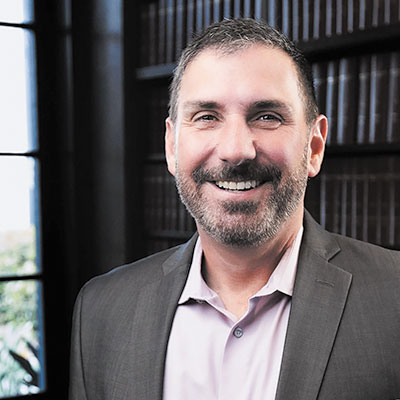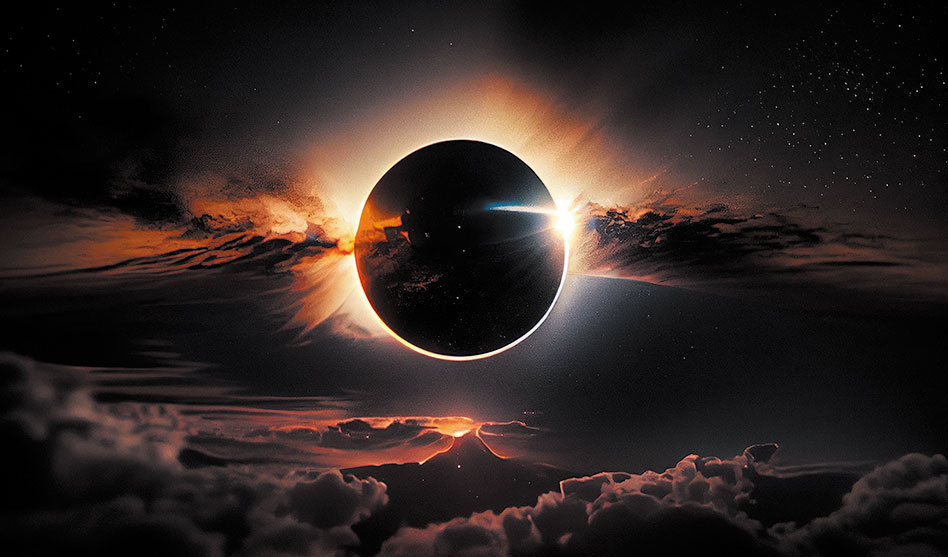Out astronomer John Mulchaey advises not to miss your one shot to see a total eclipse in Dallas
RICH LOPEZ | Staff writer
rich@dallasvoice.com
A once-in-a-lifetime event will happen on Monday afternoon, April 8, and we mean that quite literally. That is when the Great North American Eclipse will happen, and, for Dallas, this will be the first one since 1878. Dallas is the largest city in the solar eclipse’s path of totality. The next time this will happen will be in 2317.
Dr. John Mulchaey has been making the rounds in Dallas. The gay astronomer is the deputy for science of the Carnegie Institution for Science and the director and Crawford H. Greenewalt chair of the Carnegie Observatories, the Institution’s division for astronomy and astrophysics research.

Astronomer John Mulchaey
Simply put, he’s kind of an eclipse expert.
Before Monday’s space event, Mulchaey talked with Dallas Voice about what brings him to Dallas for the event and what we need to know about this event.
Dallas Voice: How did you and Carnegie Science out of California partner with the Perot Museum for the eclipse? Dr. John Mulchaey: In 2019, there was a total eclipse in Chile, and I’m basically the boss of the Las Campanas Observatory there, and a bunch of people were down there from the United States, one of them being Lyda Hill from Dallas.
She’s a big time philanthropist from the Hunt Family. How fortuitous she was there! Yeah, and so I told her that in 2024 this would be happening right over Dallas. She connected Carnegie with the Perot to start preparing for 2024. So I’ve been coming to Dallas a lot since 2019, and I’m pretty much here until at least Monday.
What have you been doing while here? This has been a great opportunity for community outreach. We’ve given out about a million solar glasses. We have 30 astronomers here visiting schools and retirement homes. On Monday, the Perot is having a big event that’s sold out. You can really feel the energy about it. Dallas has a buzz right now.
I love that this is an opportunity to talk about astronomy to everyone and to help average people experience the universe a bit.
So can you clarify where it is best to see the eclipse in regards to what parts of Dallas or North Texas? Most of Dallas is in the path of totality which is where the moon will fully block the sun. Pretty much if you’re in Dallas proper, you will be able to see it — barring any weather. And you can see it in most of Fort Worth. Now, folks to the northeast of Fort Worth will fall out of the path of totality but the eastern side of Fort Worth will be fine.
We’ve all been getting eyewear to watch the eclipse, but can we use glasses from previous eclipses for this? If you still have them from the last eclipse in October, you’re probably fine. If you still have them from the 2017 eclipse, that’s a bit old. They do have an expiration date. I do know we still have some at the Perot Museum, so be sure and get some.
Has there ever been a crossing of paths between your work and studies and your gay identity? When I was doing my thesis in the ’90s, there weren’t a lot of out astronomers. I didn’t know any. And I wasn’t out in a public way. Now, there are all these gay astronomy groups, and there are many more openly gay/queer and transgender scientists. And scientists tend to be progressive, so it’s a field where we can be openly out and comfortable.
Have you been able to visit Oak Lawn or see any of the queer culture here? I have not. I have been so busy with this that I just haven’t had the time, but I will be back still for the Perot so hopefully in the future.
What would you say is special about living and seeing this event? I cannot oversell it. People have seen partial eclipses, but it’s a very different experience with totality. When the moon blocks the sun’s surface, you see the corona or its atmosphere, and you never see that. It’s spiritual; it’s dramatic; it’s almost unreal.
And if you’ve lived in Dallas your whole life, you haven’t seen one. And I’m pretty sure no one will be around for the next one in 2317.
I think one thing it will do is remind us that we are part of this bigger thing and that’s the universe. We see the moon and stars all the time, but I think this experience reminds us that we’re part of this solar system. Watching it will be like it’s taking forever, and then it will feel like it wasn’t long enough. I just hope everyone will take the opportunity to see it and be excited.
If they miss this one, the next total eclipse will be in 2026 over Greenland, Iceland and Spain, so they could catch it there.
Visit PerotMuseum.org for more information about the eclipse with Dr. John Mulchaey.
…………………..
Do’s and don’ts of eclipse watching
DO
• Use eclipse glasses or solar viewers that meet the ISO 12312-2 standards (sometimes written as ISO 12312-2:2015). But do not stare continuously at the sun. Take breaks and give your eyes a rest.
• Use a box pinhole viewer (find directions online).
• Use a pinhole projector (find directions online).
• Use your hands to cast shadows on the ground. Cross your hands with fingers slightly spread to create a waffle pattern. Look down and you will see the spaces between your fingers project a shadow image of the sun in a crescent shape during the partial eclipse stages.
• Look at shadows on the ground, such as beneath a leafy tree, during the partial eclipse to see the crescent sun shadows projected by the spaces between the leaves.
DON’T
• Do not look at the sun directly (check the internet on how to use eclipse glasses).
• Do not view through regular sunglasses.
• Do not use damaged eclipse sunglasses or solar viewers. If they are torn, scratched or punctured, do not use them and throw them away. If the filters are coming out of their frames, discard them.
• Do not use homemade filters.
• Do not view through welder’s glass. The glass in most welding helmets is not strong enough.
• Do not view through your camera viewfinder.
• Do not view through a telescope without the proper solar filter. Do not view the telescope using your eclipse sunglasses either.
• Do not view through binoculars.
Courtesy of the Indiana State Government

